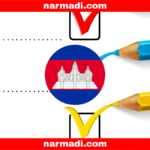A Earth Stations In Motion (ESIM) is a device installed on mobile objects for land, air, and sea transportation to support connectivity and communication. ESIMs operate at specific frequencies, such as 19.7-20.2 GHz and 29.5-30.0 GHz in the Ku frequency band.
The Indonesian government through Director General Regulation (PERDIRJEN) No. 101 of 2007 from the Ministry of Communication and Digital (KOMDIGI) has established technical requirements for satellite earth station equipment and devices for Earth Stations In Motion to ensure that these devices are safe, efficient, and do not interfere with each other.
This regulation is intended to ensure that all Earth Stations In Motion distribute in Indonesia must ensure their quality, safety, and compliance with applicable regulations through testing standards.
Also Read
Table of Contents
Earth Stations In Motion Testing Standard

Before being used or marketed in Indonesia, Earth Stations In Motion must meet several established technical requirements. Here are some of the standards that must be met:
| Components | Parameters | Values/Standards |
| High Power Amplifier (SSPA, TWTA, Klystron type) | Working frequency | C and Ku-Band |
| Gain stability | ≤ ±1 dB (SSPA) or ≤ ±0.25 dB (TWTA/Klystron) at 0-50°C | |
| Input/output VSWR | Maximum 1.3:1 | |
| Harmonic output | ≤ -60 dBc | |
| Spurious | ≤ -65 dBc | |
| Phase noise | Low across a wide range of frequency offsets | |
| Group delay | Minimal change | |
| Low Noise Amplifier | Working frequency | C and Ku-Band |
| VSWR | Maximum 1.3: 1 | |
| Noise temperature | ≤ 45 K (C-Band), ≤ 100 K (Ku-Band) | |
| Gain flatness | ≤ ±0.2 dB per 40 MHz | |
| Upconverter | Working frequency | C and Ku-Band |
| Input/output return loss | ≥ 20 dB | |
| Noise figure | ≤ 15 dB | |
| Spurious | ≤ -80 dBm (without carrier), ≤ -60 dBm (with carrier) | |
| Gain stability | ≤ ±1 dB (0-50°C), ≤ ±0.25 dB (24 hours) | |
| AM/PM conversion | ≤ 0.1°/dB | |
| Downconverter | Working frequency | C and Ku-Band |
| Input/output return loss | ≥ 20 dB | |
| Noise figure | ≤ 15 dB | |
| Gain stability | ≤ ±1 dB (0-50°C), ≤ ±0.25 dB (24 hours) | |
| AM/PM conversion | ≤ 0.1°/dB | |
| Antenna | Gain | Referring to ITU-R S. 524-5 |
| Polarization | Circular (LHCP/RHCP) isolation ≥ 27.3 dB, or linear isolation ≥ 30 dB | |
| Pointing coverage | Azimuth 360°, elevation 0°-90° | |
| Modem | Interface | G.703, RS-232, Ethernet (international standard) |
| IF frequency | 52-88 MHz / 104-176 MHz / 950-1750 MHz | |
| Data rate | n x 64 Kbps | |
| Modulation | PSK or QAM | |
| Operating temperature & humidity | -10°C to 60°C, 95% humidity (non-condensing) |
Testing Requirements

Test sample collection method
Test samples are collected randomly under the applicable testing procedures of the testing institution.
Testing method
The testing method is determined by the testing institution, which is able to demonstrate qualitatively and quantitatively that the test samples meet these technical requirements.
Test pass criteria
Test results are deemed to have passed the test if all test specimens meet the requirements specified in these technical requirements.
If a test specimen is deemed to have failed the test, then all groups included in the test specimen are deemed to have failed the test.
Earth Stations In Motion Certification Process in Indonesia

For Earth Stations In Motion to be used legally in Indonesia, certification from DJID is required. Here are the steps to get it:
Pre-testing the device
Before official testing, the device must be pre-tested first using measuring equipment such as a spectrum analyzer.
This helps ensure devices meet technical standards before being tested in authorized laboratories.
Testing at an official laboratory
After passing the pre-testing, the gadget will be sent to an assigned official research facility for experience testing according to the guidelines stipulated in the Director General Regulation (PERDIRJEN) of the Director General of the Ministry of Communication and Digital (DJID) No. 101 of 2007.
Issuance of certificates
After the device passes testing, an official certificate will be issued by DJID. This certificate is a requirement to market the device legally in Indonesia.
Tips to ensure standards compliance
- Learn the latest regulations: Make sure you understand every detail of the Director General Regulation (PERDIRJEN) of the Director General of the Ministry of Communication and Digital No. 101 of 2007, including technical requirements and test methods.
- Perform pre-testing: Before official testing, perform pre-testing to ensure the device meets standards. If you don’t have a measuring instrument, use the DJID certification service, which provides pre-testing services.
- Counsel a master: If this is your to begin with time looking for certification, consider utilizing the services of experienced DJID certification administrations.









